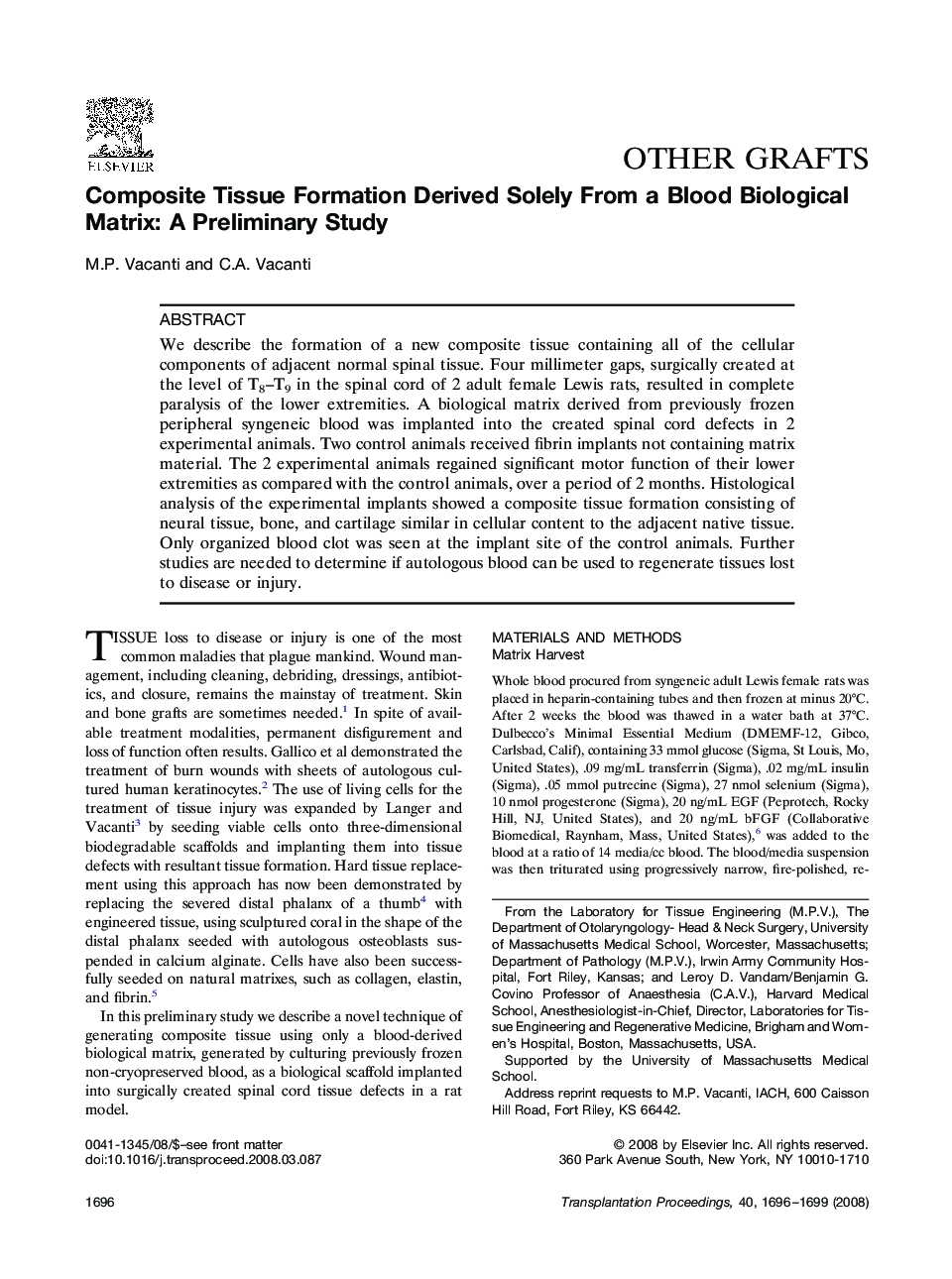| Article ID | Journal | Published Year | Pages | File Type |
|---|---|---|---|---|
| 4258286 | Transplantation Proceedings | 2008 | 4 Pages |
Abstract
We describe the formation of a new composite tissue containing all of the cellular components of adjacent normal spinal tissue. Four millimeter gaps, surgically created at the level of T8-T9 in the spinal cord of 2 adult female Lewis rats, resulted in complete paralysis of the lower extremities. A biological matrix derived from previously frozen peripheral syngeneic blood was implanted into the created spinal cord defects in 2 experimental animals. Two control animals received fibrin implants not containing matrix material. The 2 experimental animals regained significant motor function of their lower extremities as compared with the control animals, over a period of 2 months. Histological analysis of the experimental implants showed a composite tissue formation consisting of neural tissue, bone, and cartilage similar in cellular content to the adjacent native tissue. Only organized blood clot was seen at the implant site of the control animals. Further studies are needed to determine if autologous blood can be used to regenerate tissues lost to disease or injury.
Related Topics
Health Sciences
Medicine and Dentistry
Surgery
Authors
M.P. Vacanti, C.A. Vacanti,
